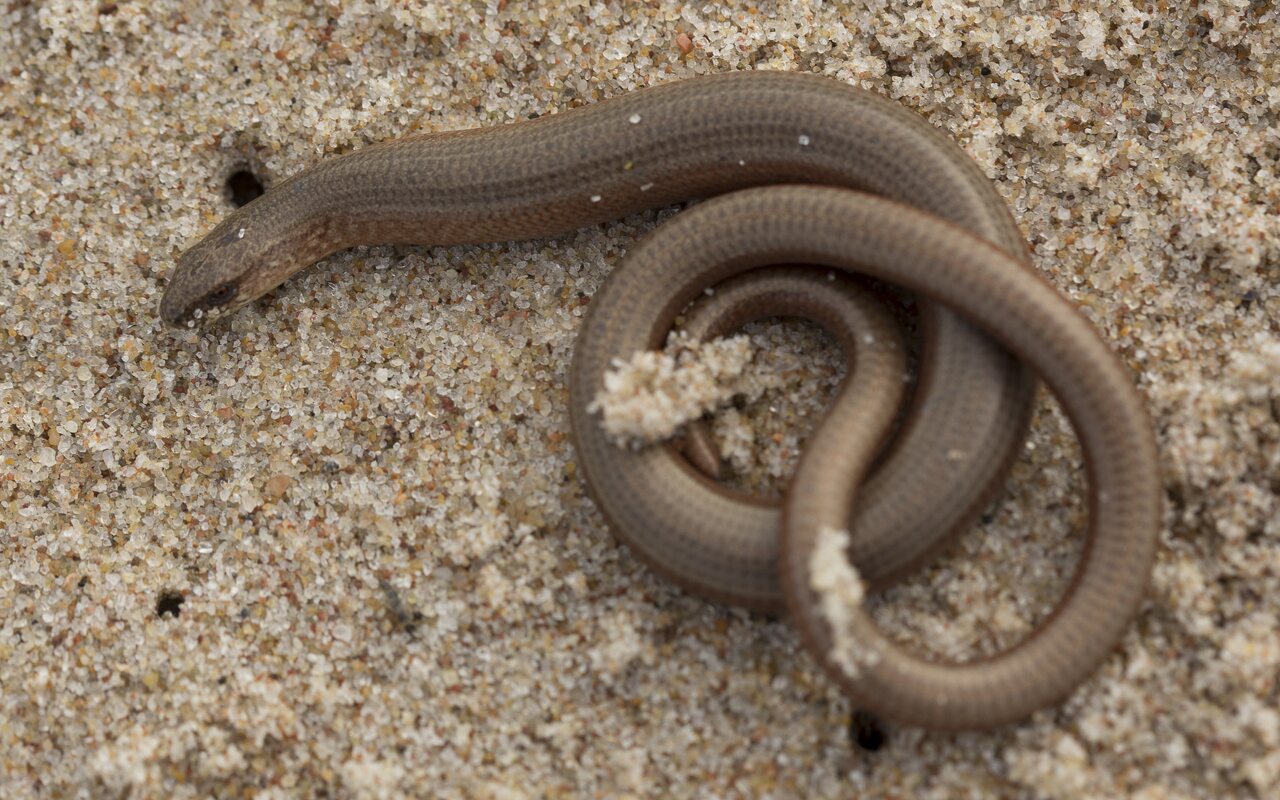
Anguis fragilis · trapusis gluodenas
- slow worm, deaf adder, blindworm
- Blindschleiche
- glodene, trauslā glodene
- trapusis gluodenas, geležine gyvatė, varinė gyvatė, žibulis
- padalec zwyczajny
- en.wikipedia.org/wiki/Slow_worm
- www.first-nature.com/reptiles/anguis-fragilis.php
- www.woodlandtrust.org.uk
It is a reptile native to western Eurasia. Slow worms are semifossorial (burrowing) lizards, spending much of their time hiding underneath objects. The skin of slow worms is smooth with scales that do not overlap one another. Like many other lizards, they autotomize, meaning that they have the ability to shed their tails to escape predators. While the tail regrows, it does not reach its original length.
Slow worms are ovoviviparous; at birth, the 7 to 10 cm long young animals are in a very thin, transparent egg shell, which they pierce immediately afterwards. They initially weigh less than a gram and still have a remnant of the yolk. Adult slow worms grow to be about 50 cm long, and are known for their exceptionally long lives; the slow worm may be the longest-living lizard, living about 30 years in the wild and up to at least 54 years in captivity (this record is held by a male slow worm that lived at the Copenhagen Zoo from 1892 until 1946, the age when first obtained is unknown). The female often has a stripe along the spine and dark sides, while the male may have blue spots dorsally. Juveniles of both sexes are gold with dark brown bellies and sides with a dark stripe along the spine.
Vienas ilgiausiai gyvenančių driežų – nelaisvėje iki 50 metų, gamtoje iki 30 metų. Gyvavedis. Paplitęs visoje Europoje, taip pat Šiaurės Afrikoje. Gluodenas gyvena spygliuočių ir lapuočių miškuose, miško aikštelėse, kirtavietėse, paprastai pasislėpęs po lapais ar šakomis. Kartais randamas soduose, krūmais apaugusių upių ir upelių slėniuose. Žiemoja graužikų urvuose, plyšiuose po medžių kelmais.
‥
0 comments
Add a comment